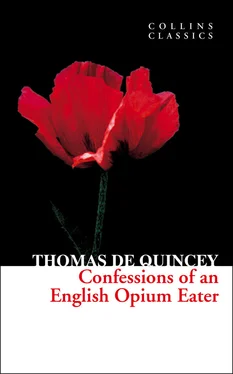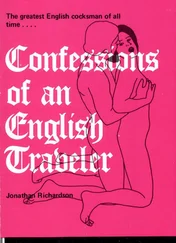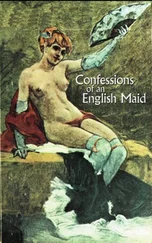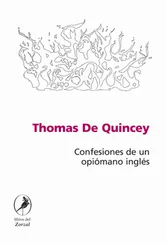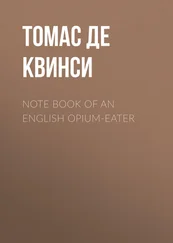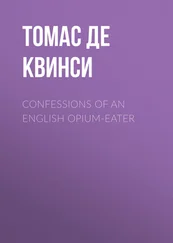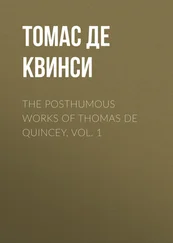CONFESSIONS
OF AN
ENGLISH
OPIUM EATER
Thomas de Quincey

Table of Contents
Title Page CONFESSIONS OF AN ENGLISH OPIUM EATER Thomas de Quincey
History of Collins History of Collins In 1819, millworker William Collins from Glasgow, Scotland, set up a company for printing and publishing pamphlets, sermons, hymn books and prayer books. That company was Collins and was to mark the birth of HarperCollins Publishers as we know it today. The long tradition of Collins dictionary publishing can be traced back to the first dictionary William published in 1824, Greek and English Lexicon . Indeed, from 1840 onwards, he began to produce illustrated dictionaries and even obtained a licence to print and publish the Bible. Soon after, William published the first Collins novel, Ready Reckoner , however it was the time of the Long Depression, where harvests were poor, prices were high, potato crops had failed and violence was erupting in Europe. As a result, many factories across the country were forced to close down and William chose to retire in 1846, partly due to the hardships he was facing. Aged 30, William’s son, William II took over the business. A keen humanitarian with a warm heart and a generous spirit, William II was truly ‘Victorian’ in his outlook. He introduced new, up-to-date steam presses and published affordable editions of Shakespeare’s works and Pilgrim’s Progress , making them available to the masses for the first time. A new demand for educational books meant that success came with the publication of travel books, scientific books, encyclopaedias and dictionaries. This demand to be educated led to the later publication of atlases and Collins also held the monopoly on scripture writing at the time. In the 1860s Collins began to expand and diversify and the idea of ‘books for the millions’ was developed. Affordable editions of classical literature were published and in 1903 Collins introduced 10 titles in their Collins Handy Illustrated Pocket Novels. These proved so popular that a few years later this had increased to an output of 50 volumes, selling nearly half a million in their year of publication. In the same year, The Everyman’s Library was also instituted, with the idea of publishing an affordable library of the most important classical works, biographies, religious and philosophical treatments, plays, poems, travel and adventure. This series eclipsed all competition at the time and the introduction of paperback books in the 1950s helped to open that market and marked a high point in the industry. HarperCollins is and has always been a champion of the classics and the current Collins Classics series follows in this tradition – publishing classical literature that is affordable and available to all. Beautifully packaged, highly collectible and intended to be reread and enjoyed at every opportunity.
Life & Times
Part I
From the “London Magazine” for September 1821.
Preliminary Confessions
Part II
From the “London Magazine” for October 1821.
Appendix
From the “London Magazine” for December 1822.
Endnotes
Classic Literature: Words and Phrases adapted from the Collins English Dictionary
Copyright
About the Publisher
In 1819, millworker William Collins from Glasgow, Scotland, set up a company for printing and publishing pamphlets, sermons, hymn books and prayer books. That company was Collins and was to mark the birth of HarperCollins Publishers as we know it today. The long tradition of Collins dictionary publishing can be traced back to the first dictionary William published in 1824, Greek and English Lexicon . Indeed, from 1840 onwards, he began to produce illustrated dictionaries and even obtained a licence to print and publish the Bible.
Soon after, William published the first Collins novel, Ready Reckoner , however it was the time of the Long Depression, where harvests were poor, prices were high, potato crops had failed and violence was erupting in Europe. As a result, many factories across the country were forced to close down and William chose to retire in 1846, partly due to the hardships he was facing.
Aged 30, William’s son, William II took over the business. A keen humanitarian with a warm heart and a generous spirit, William II was truly ‘Victorian’ in his outlook. He introduced new, up-to-date steam presses and published affordable editions of Shakespeare’s works and Pilgrim’s Progress , making them available to the masses for the first time. A new demand for educational books meant that success came with the publication of travel books, scientific books, encyclopaedias and dictionaries. This demand to be educated led to the later publication of atlases and Collins also held the monopoly on scripture writing at the time.
In the 1860s Collins began to expand and diversify and the idea of ‘books for the millions’ was developed. Affordable editions of classical literature were published and in 1903 Collins introduced 10 titles in their Collins Handy Illustrated Pocket Novels. These proved so popular that a few years later this had increased to an output of 50 volumes, selling nearly half a million in their year of publication. In the same year, The Everyman’s Library was also instituted, with the idea of publishing an affordable library of the most important classical works, biographies, religious and philosophical treatments, plays, poems, travel and adventure. This series eclipsed all competition at the time and the introduction of paperback books in the 1950s helped to open that market and marked a high point in the industry.
HarperCollins is and has always been a champion of the classics and the current Collins Classics series follows in this tradition – publishing classical literature that is affordable and available to all. Beautifully packaged, highly collectible and intended to be reread and enjoyed at every opportunity.
Opium and Addiction
Laudanum is a tincture of opium dissolved in alcohol. It was once widely used as a ‘cure-all’ because it contains high levels of morphine and codeine, which make it a very effective analgesic. It also has a very relaxing effect on the mind due to its narcotic content. In the early 19th century, many people suffered from chronic and ultimately fatal ailments, such as tuberculosis (consumption) and syphilis, for which there were no known cures. Laudanum became the medication of choice, as it alleviated the pain and soothed the mind, enabling people to continue functioning while their diseases gradually took away their lives.
In those days, laudanum contained raw opium, so that it was a cocktail of many compounds exuded by the opium poppy. It is still used in some countries for the treatment of people in severe pain due to terminal illnesses, such as cancer, but these days the drug is processed so that the solution does not contain undesirable chemicals. In its processed form, it is more commonly referred to as tincture of opium rather than laudanum. The term ‘laudanum’ is derived from the word ‘ladanum’ which is an aromatic resin obtained from the rock rose ( Cistus ladanifer ). As opium is the dried sap of the opium poppy ( Papaver somniferum ), pharmacists saw a similarity between the two. The species name of the opium poppy – somniferum – alludes to the sleep-inducing properties of the drug.
Confessions of an English Opium Eater
Confessions of an English Opium Eater (1821) is, as it suggests, a confessional on the effects that laudanum had on the author. This is because opium has the unfortunate quality of being highly addictive, both physiologically and psychologically. The result is that the patient becomes a user and craves higher and higher doses as their tolerance for the drug increases. Opium addiction, through the administration of laudanum, became quite a problem. People needed the drug to cope with their afflictions, but its use sent them into a spiraling dependency that, in turn, caused other problems due to the opium’s side effects. These included erratic and unreasonable behaviour, malnutrition due to vomiting and loss of appetite, and general self-neglect. Of course, the problem was also compounded by the fact that alcohol was the solvent, leading to alcoholism alongside the opium addiction.
Читать дальше
